
Ultimate Guide to Hair Replacement
Hair loss can be devastating to both genders. Men and women typically feel more attractive with a full head of hair, which is a sign of health and vitality. Hair loss, on the other hand, is commonly associated with aging and poor health, which can make it difficult for individuals experiencing hair loss.
While hair loss and baldness can be caused by a variety of factors, hair replacement is a safe, effective solution for many seeking the look of a full head of healthy hair. With this ultimate guide to hair replacement, we’ll cover everything from the common causes of hair loss to the numerous treatments available to address the issue.
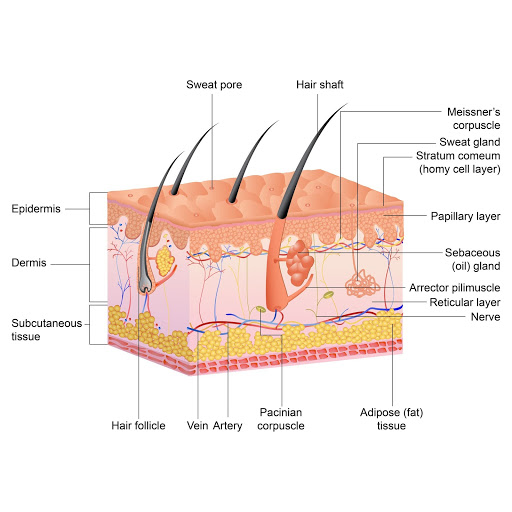
Anatomy of Hair
Hair is part of the integumentary system of the body, along with the nails and skin. It is primarily composed of keratin, a type of protein, which is produced in follicles, or tunnel-shaped structures.
Within the hair follicles is the hair bulb, which is composed of cells that contain keratin. Melanin is also found within the hair bulb, which is what gives hair its color. The bulb is found beneath the skin, but the hair that comes through the skin is the shaft. The hair shaft is composed of dead keratin fiber cells.
Hair Growth Cycle
The hair cycle has four primary stages:
- Anagen: This is the growth phase and typically lasts three to five years, during which the hair grows about a half an inch each month. At its full length, the hair from the anagen phase may be between 18 and 30 inches long.
- Catagen: This a regression phase and is the precursor to shedding. During this phase, the follicle detaches itself from the papilla, which refers to the vascular process of connective tissue extending into and nourishing the root of the hair. This halts hair growth and typically lasts 10 days.
- Telogen: During this phase, the hair is dormant until it detaches itself from the follicle.
- Exogen: This is the shedding stage. After the hair sheds, the follicle will stay inactive for roughly three months before the cycle starts again.
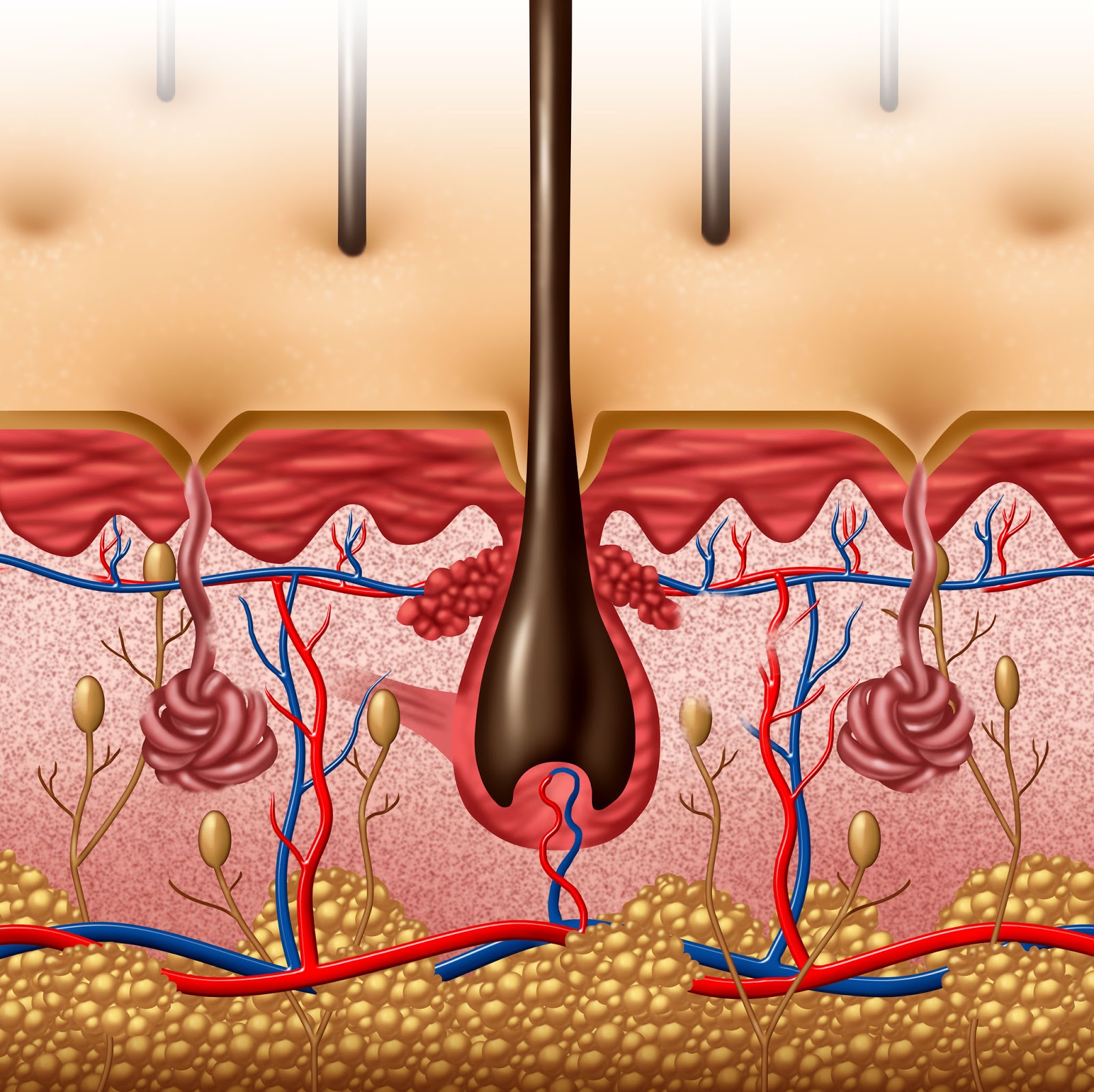
Though all hairs on the body go through this cycle, they can all be in different stages at the same time. This keeps hair constantly replenishing itself on a healthy individual, since 50 to 100 strands a day are considered normal shedding. The different stages of the hair cycle are also why hair loss often occurs gradually and progressively, before becoming noticeable.
Typically, hair loss and hair thinning occur during the anagen phase or the telogen phase. During normal aging, the anagen phase decreases and the follicles receive less nourishment, leading to weak and thin hair. The hair may also enter the telogen phase too early, or the catagen phase is too short, leading to excessive shedding.
The normal length of each hair cycle phase can be disrupted as well, which leads to hair loss and thinning. This can be caused by everything from diet to stress to illness.
Hair Loss
Hair loss is a catchall term that may refer to balding, thinning, excessive shedding or the total loss of hair. However, these terms are designated to different hair loss conditions and different causes.
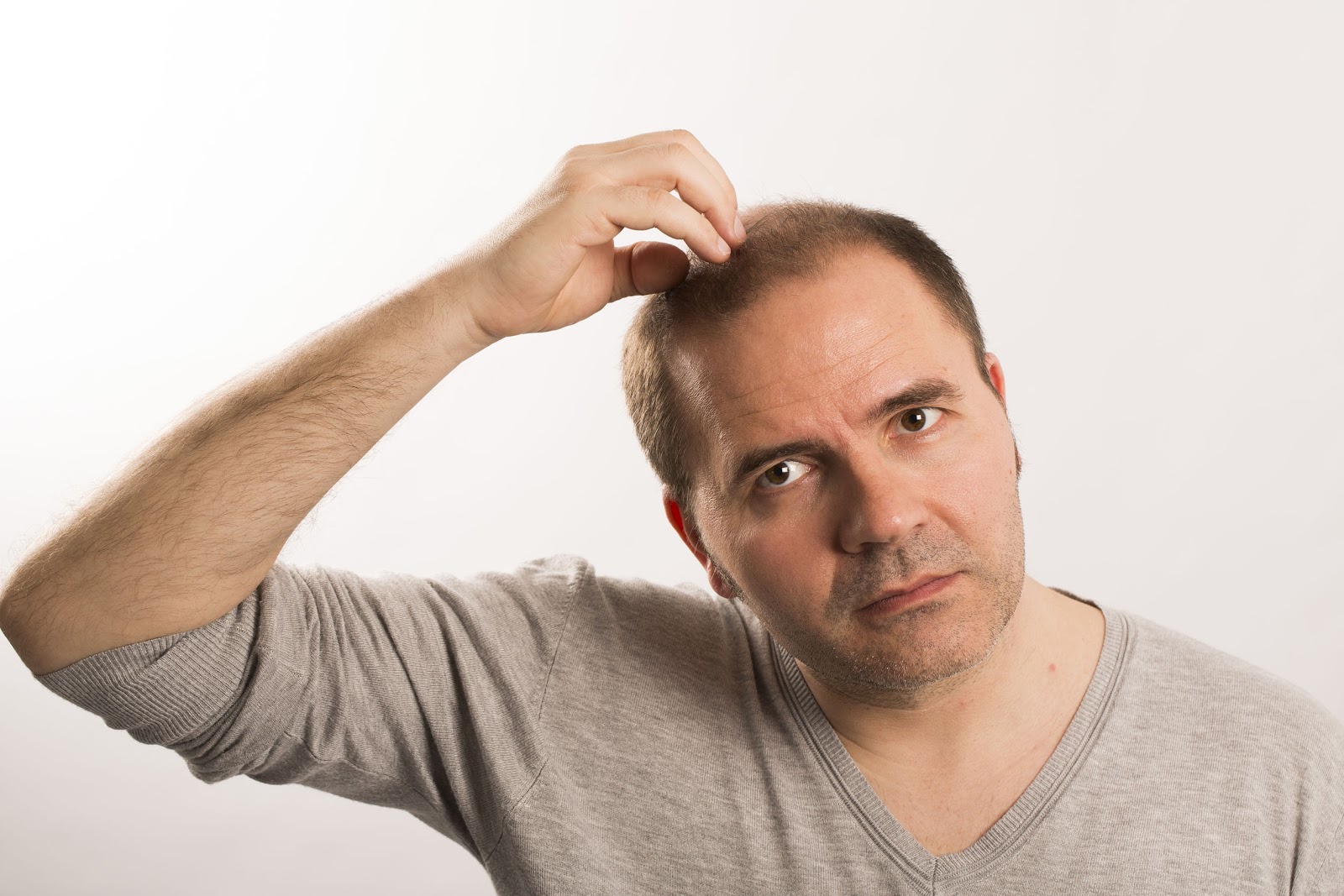
These are the most common types of hair loss:
Androgenic alopecia
Androgenic alopecia is caused by the male hormones. Testosterone on the scalp converts into dihydrotestosterone, which causes the follicles to shrink and inhibit the hair growth, ultimately causing baldness. Because there is less testosterone on the sides and back of the head than on the crown, hair loss tends to be concentrated in this area.
Androgenic alopecia is characterized by hair loss that begins at the crown of the head, usually forming a horseshoe shape. This is usually referred to as “male pattern baldness” . It is more common in men that women. It is usually caused by genetics and the natural aging process. Though it’s most common in middle-aged men, it can begin as early as the 20s.
Alopecia Areata
Alopecia areata differs from androgenic alopecia in that it has a patchy appearance, rather than a set pattern. Individuals with this condition experience smooth bald patches all over the scalp, often circular in appearance. These can be small or large, but often starts with only a few and progresses to multiple spots all over the scalp.
Alopecia areata is an autoimmune disorder, which means that the body’s immune defenses mistakenly attack its own tissues. In this case, the immune system attacks the hair follicles, leading to hair loss.
Alopecia Totalis
Alopecia totalis is a skin condition that causes hair loss, beginning with small patches that spread over time. It is also believed to be the result of an autoimmune disorder that attacks the hair follicles. Unlike alopecia areata, however, alopecia totalis causes complete baldness of the scalp.
Alopecia Universalis
Alopecia universalis is a rare disorder and more advanced form of alopecia areata. It is also believed to be the result of an autoimmune disorder, though a combination of genetic and environmental factors may play a role in the condition.
Alopecia universalis causes total hair loss on both the scalp and body. Individuals with this condition also experience symptoms of the skin and nails, such as atopic dermatitis and pitting of the nails.
Cicatricial Alopecia
Cicatricial alopecia is a type of hair loss that may be caused by a variety of skin disorders found on the scalp. These disorders may cause scarring of the hair follicles or scalp that prevent regrowth. Individuals with this condition experience small bald patches with noticeable redness.
Involutional Alopecia
Involutional alopecia isn’t caused by an underlying condition, but it does affect the hair growth cycle. It is characterized by a longer dormant phase of telogen than anagen. While there are many potential lifestyle causes of involutional alopecia, the cause and progression of the condition are difficult to identify and predict.
Nonmedical Causes of Hair Loss

In addition to medical conditions that cause hair loss, some hair loss is caused by environmental or lifestyle factors that act as a trigger or worsen an existing condition.
Traction Alopecia
Unlike the previous conditions, traction alopecia isn’t caused by an underlying health condition. It occurs as the result of constant pulling on the hair, which damages the follicle or loosens the grip on the scalp, causing it to fall out.
Traction alopecia is more common in women, due to tight hairstyles and chemical processing.In African AMrican women, tight corn row hair styles are a frequent cause of traction alopecia.
Diet
Hair growth relies on proper nutrition, so nutrient deficiencies or surpluses can trigger hair loss. Keratin production requires adequate protein, iron and B vitamins, and inadequate supply of these nutrients can result in a short anagen phase or a long telogen phase.
Certain foods can worsen hair loss as well. Sugar is known to trigger the overproduction of androgen, a male hormone, which causes hair follicles to shrink and halts hair growth. Fish high in mercury can also weaken the hair shaft and cause hair to fall out.
Stress
Stress from emotional or physical trauma causes many issues in the body, including hair loss. This is more common in women than men, and the hair loss is usually temporary.
Medication
Several medications can interfere with physiological processes and cause temporary hair loss, such as blood thinners, though chemotherapy is the most common cause of medication-related hair loss. This type of hair loss tends to be progressive and slow, though the hair usually grows back when the treatment is finished.
Hair Care
Hair is strong and resilient on its own, but aggressive treatment of hair can result in hair weakening and loss over time, as well as scalp damage.
Excessive brushing and combing, tight hairstyles, rough massage and scratching can weaken the hair and cause it to stop growing to its normal length. Hair dye, permanents, relaxing, bleach, hair spray, gel and other hair treatments not only contain chemicals that damage the scalp and cause the hair shaft to break, but they can also disrupt the natural hair cycle.
Routine shaving can also cause ingrown hairs that scar, which affects future hair growth.
Hair Loss Treatment
Hair loss is devastating, but fortunately, there are many hair loss treatments and cures on the market. Some are designed to treat temporary conditions, while others offer a permanent cure.
Minoxidil
Commonly known as Rogaine, minoxidil is a medication that’s used to treat alopecia areata and male pattern baldness. It is a topical, over-the-counter drug that comes in either a foam or liquid form, and comes in a 2-percent or 5-percent dosage. It is most effective for those with more recent baldness and smaller bald spots. Most who use minoxidil experience mild to moderate hair regrowth with continued use.
Minoxidil is not a permanent solution, however. It can work in up to 80% of individuals that use it regularly. However,, when its use is stopped, often due to patient frustartion, the hair follicles revert to their original genetically programmed state of loss. Side effects include mild irritation, excessive dryness and hair growth on areas other than the scalp.
Finasteride
Finasteride, commonly known as Propecia, is a medication for male baldness that comes in pill form. It’s designed to slow hair loss while promoting hair regrowth by preventing the enzyme, type II 5-alpha reductase, that produces the androgen, DHT. It has been found effective in 80 percent of men when taken on a daily basis.
Side effects of finasteride MAY include a decreased sex drive and temporary impotence. Women are unable to take finasteride, due to a high likelihood of harm to an unborn fetus, resulting in birth defects.
Corticosteroids
Corticosteroids are medications that suppress the immune system, making it an effective treatment for autoimmune-related hair loss conditions. Steroid use can successfully suppress the immune system. Thus the hair follicles may no longer suffer attack, which allows new growth.
Liquid corticosteroids can be injected into the scalp every four to six weeks, or corticosteroid creams can be applied directly to the bald patches. The most common corticosteroids for topical use are hydrocortisone, mometasone and betamethasone. Side effects include dryness and thinning of the skin, as well as an increase in acne.
Contact Immunotherapy
Diphenylcyclopropenone (DPCP) is a topical, experimental drug used in contact immunotherapy. With this treatment, the DPCP is applied to the scalp once a week and slowly increased until an allergic reaction occurs. Though it is generally considered safe, it is still experimental and may cause skin rashes and swollen lymph nodes.
Hair Transplant
Hair transplant is a surgical treatment for permanent cases of hair loss. This treatment uses existing hair to implant into the bald areas of the head, which is harvested by graft or follicular sample of the areas of the head with hair.
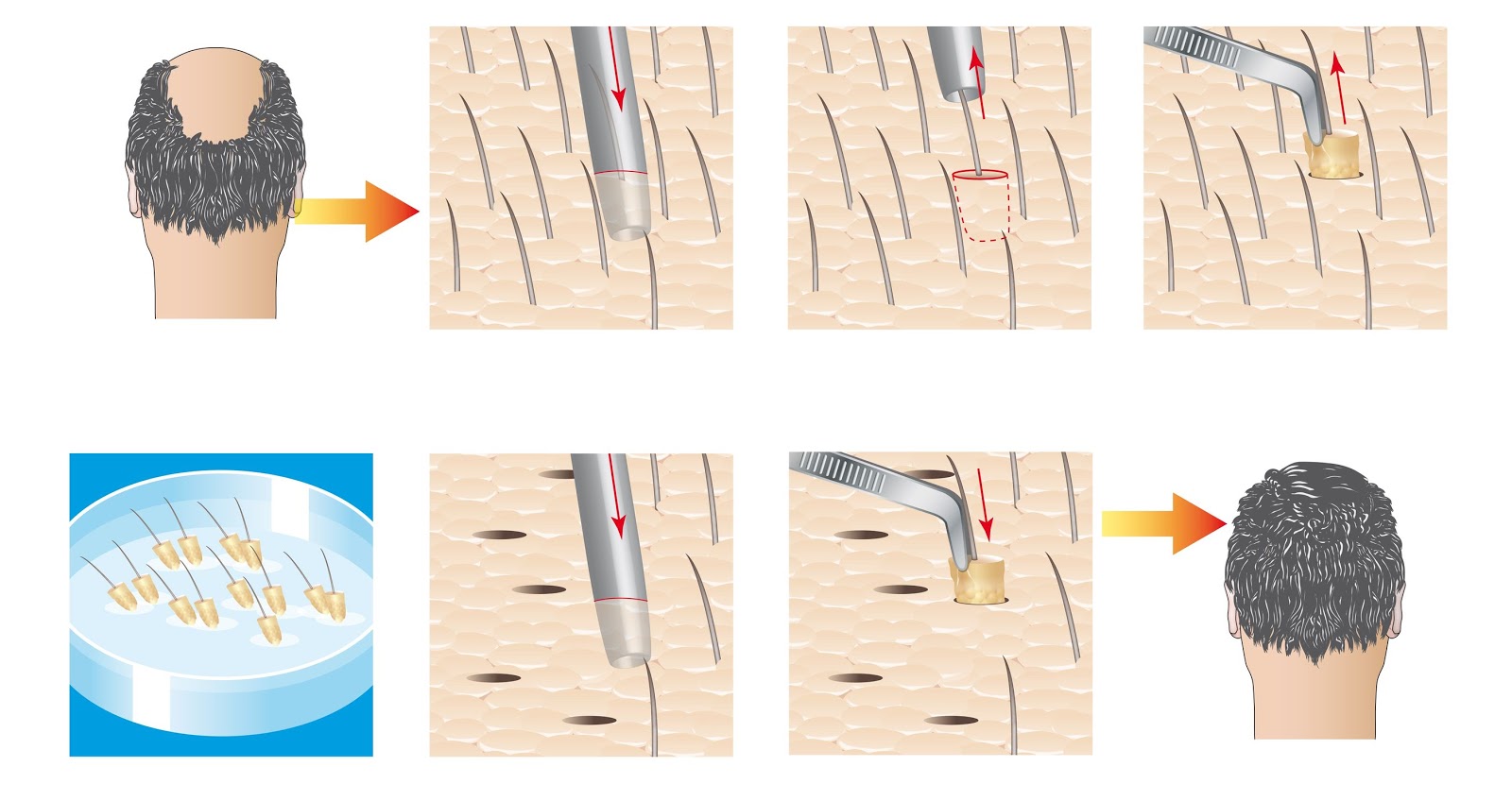
There are two types of hair transplants:
- Follicular Unit Transplantation (FUT): With this procedure, a larger patch of skin on the scalp is extracted and turned into small grafts. Transplant sites on the bald patches are created with small needles and local anesthetic, and the grafts are implanted. This procedure is preferred for those with large bald areas, and the recovery rate is slower.
- Follicular Unit Extraction (FUE): With this procedure, small, individual follicle grafts are removed with a machine and transplanted onto the bald areas. This procedure is preferred for those with small bald patches,areas of thinning, and is quite useful in the treatment of women with diffuse thinning.
Other than the size of the grafts and the treatment area, these two procedures are similar. Once the grafts are ready for transplantation, the transplant locations are cleaned and anesthetized. Small incisions are made with a needle or scalpel, and the grafts are transplanted. Hair transplant surgery can take several hours.
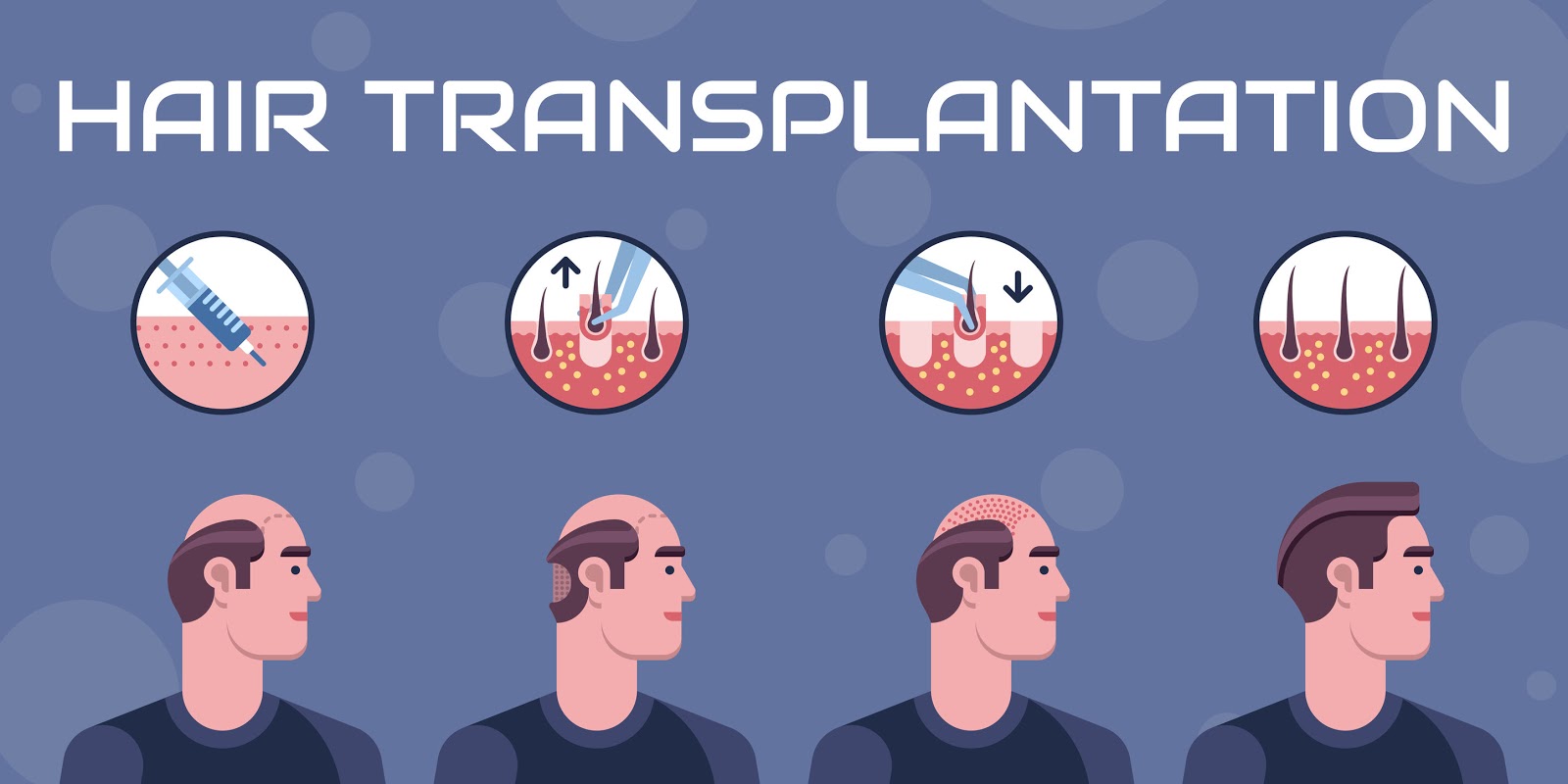
In the two to three weeks following surgery, the transplanted hair stubble will fall out, but the follicles are still viable. Because of this, new hair growth from the transplanted follicles is expected to appear around four or five months post surgery, with the maximum growth in six to nine months.
Hair transplant surgery is generally recommended for significant and permanent causes of hair loss. Individuals under the age of 25, those with continued hair loss, or patients with poorly regulatedhealth conditions, such as heart disease or diabetes, are not good candidates for hair transplant surgery. Individuals with scalp disorders, skin disorders or those who suffer from psychological conditions that cause them to damage their own hair are also poor candidates for hair transplant surgery.
Hair transplant surgery has minimal side effects. The most common include swelling of the face or scalp for a few days following the procedure and mild discomfort. The hair removed from the donor area of the scalp is more likely to continue growing over the course of your life, however, since it isn’t as influenced by male pattern baldness.
Though hair transplant surgery is routine and safe, it’s important to consult an experienced and qualified physician. Achieving lasting, natural-looking results depends on the skill of the surgeon, so be sure that you’re choosing a physician you’re comfortable with and be certain that all your questions are answered thoroughly and completely.
Visit Vegas Valley Hair Restoration
Hair loss can be upsetting to experience, but there are many options to prevent and treat hair loss in both men and women. From lifestyle changes to hair transplant surgery, many individuals suffering from premature or noticeable hair loss can enjoy a full head of hair with the right treatment.
If you’re considering a hair restoration procedure, it’s important to choose a qualified physician with plenty of experience. The natural orientation and patterns of hair growth, as well as the quality of the hairline, can affect the final look of your hair transplant surgery. Because of this, you’ll want to work with a physician with the experience to give you attractive, realistic results, such as Dr. Simon at Vegas Valley Hair Restoration.
Check out this video to learn more about Male Pattern Baldness:
We’ll be happy to meet with you for a free consultation to discuss your hair treatment options, so contact us today to see how we can help!